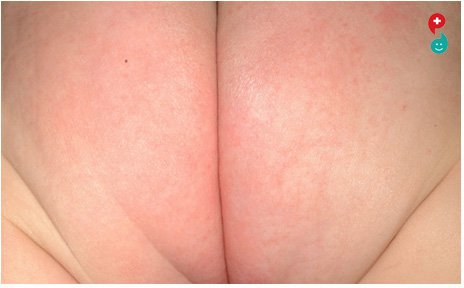
Diaper Rash: Treatment and Remedies*
*Always consult your Pediatrician before treatment
If you’re noticing your baby’s diaper area looks a little red or irritated, chances are it might be diaper rash.
What is diaper rash?
Diaper rash is a common form of inflamed skin that may appear red or bumpy surrounding the area of your baby’s diaper.
Diaper Rash Symptoms
If your baby’s diaper area looks irritated and red, chances are it's diaper rash. The skin may also be a little puffy and warm when you touch it. Diaper rash can be mild – a few prickly red spots in a small area – or extensive, with tender red bumps that spread to your baby’s tummy and thighs.
If the rash also has reddish pink bumps surrounding a red patch in the diaper area or around your baby's mouth, it may have already advanced to a yeast diaper rash, which needs to be treated with topical antifungal medication.
Since your baby cannot tell you in words exactly what's wrong, he may express his discomfort through crying and irritability, especially at diaper-changing times, and possibly by a loss of appetite.
Diaper Rash Treatment and Remedies
To treat diaper rash, it’s important to change your baby's diapers frequently to reduce moisture on the skin. Here are some other tips to help treat your baby’s bottom:
Air out the skin by letting your baby spend a little time each day without a diaper.
After a bowel movement, clean your baby's bottom thoroughly and pat it dry before putting a diaper on.
Spread a thick layer of ointment containing zinc oxide or petroleum jelly, or one recommended by your baby's doctor, to prevent urine from reaching the irritated skin.
Consider whether you’ve recently changed the baby’s diet or anything else in the baby’s environment that could be causing a rash.
Call your health care provider if the rash doesn't clear up after a few days, or if blisters or pus-filled bumps appear.
Preventing Diaper Rash
While diaper rash is pretty common, here are some tips to keep your baby’s bottom rash-free:
Make sure you change your baby's diapers as soon as possible after they become wet or soiled.
Clean your baby's bottom thoroughly after each bowel movement and allow the area to dry, being careful not to rub the skin too much or too harshly.
Coat your baby's bottom with a thin layer of protective ointment or petroleum jelly.
When putting on a fresh diaper, secure it comfortably, not too tight and not too loose, allowing some air to circulate.
Consider using a disposable diaper, such as Pampers Swaddlers, which has thin layer of lotion on the top sheet to help keep baby’s delicate skin dry.
If your child is taking antibiotics or has diarrhea, keep a close watch on the diaper area and change diapers more frequently.
For more information, see A Quick Guide to Diaper Rash.
What else can cause a rash in the diaper area other than diaper rash?
What you think is diaper rash on your child's bottom may very well be another mild childhood skin condition. For this reason, it's important to recognize the difference between diaper rashes and other common ailments so you can treat each one effectively. Impetigo, seborrheic dermatitis, and prickly heat are the conditions most commonly mistaken for diaper rash.
Impetigo
A contagious bacterial skin infection that shows up in the diaper area and on the face and hands, with pimples and scabby, honey-colored sores that blister and itch. Because this condition is contagious, all family members should wash their hands often with antibacterial soap to keep it from spreading. If you see this type of sore, call your pediatrician, who will likely prescribe an antibiotic cream or oral antibiotic.
Seborrheic Dermatitis
A common skin condition that can affect infants in their first year. You'll find raised, rough red patches covered with thick white or yellow scales on your baby's groin, genitals, and lower abdomen; when similar patches appear on the scalp, the condition is known as cradle cap. Try applying an over-the-counter cortisone or hydrocortisone ointment to the affected areas, and keep your baby clean and dry. If the condition doesn't clear up soon, see your pediatrician, who may prescribe a stronger cortisone cream.
Prickly Heat
Heat and humidity can lead to prickly heat, caused when perspiration builds up on the skin and is unable to evaporate. Less common after 3 months, this condition looks like an acne breakout, with very small pink bumps, and can show up in the skin folds in the diaper area, especially where the plastic lining of a diaper or diaper cover touches the skin. Moisture and humidity are the main causes of prickly heat, so make sure your child is not overdressed and that his skin remains dry. If prickly heat seems severe, it's time to contact your health care provider.







